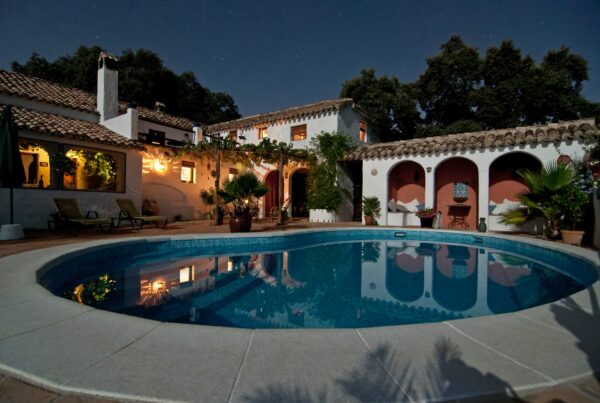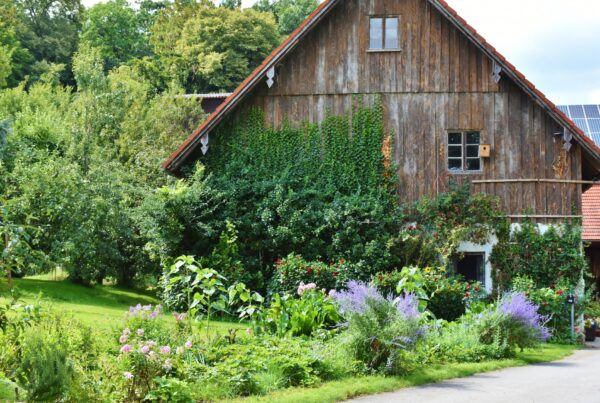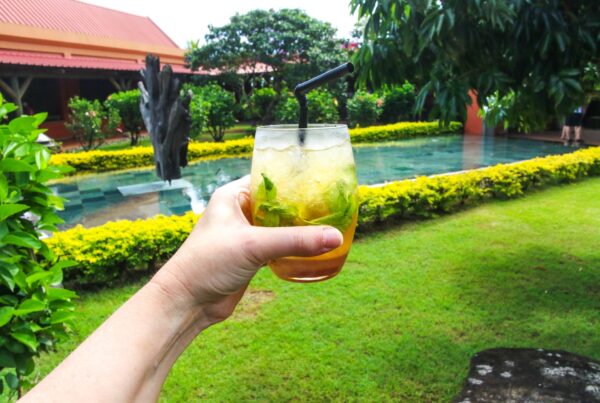Last Updated on March 13, 2023
Incorporating edible plants into your flowerbeds and landscaping is a great way to add beauty and function to your outdoor space. However, it takes some planning and care to make sure that they don’t overwhelm your flowers, look weedy and unkempt, or block the view of your landscaping. Here are some ideas for incorporating edible plants into your landscape:
Place Tall Plants Along Fences
When you are planning how to add edible flowers to your landscaping, make sure that you pay attention to the heights and sizes of the plants before you get started. You don’t want to overwhelm your landscaping and flowerbeds with tall, gangly plants. Instead, place these plants along fences, in the back of flowerbeds, and in other areas where they won’t be obtrusive. Tall plants make excellent borders and visual boundaries along property lines, beside outbuildings, and anywhere you want to screen off an unattractive area.
Sunflowers are one example of a tall edible plant that you can grow in these areas to attract birds or harvest seeds. In some states, you can legally grow your own cannabis which will also need to be placed in an out-of-the-way area because it can grow so tall. You can purchase weed seeds USA from online stores.
Plant Herbs as Border Plants
Plant herbs such as basil, thyme, and parsley as border plants around your flowerbeds or pathways. These plants are not only attractive but also provide fresh herbs for cooking. Some herbs are taller than others, so make sure that you pay attention to the growth patterns of your plants when designing the layout.
Mint is a tasty, popular, and attractive herb that is very easy to grow- in fact, it can take over your flowerbed. Mint is best planted in pots to help it stay contained. You can also plant it somewhere that you won’t mind if it spreads a bit, such as the back corner of your yard.
Use Edible Flowers as Accents
Edible flowers such as nasturtiums, marigolds, violets, and pansies are not only beautiful but also add a pop of color to salads, cocktails, and other dishes. Plant these annuals along the edges of your flowerbeds, throughout your vegetable beds, or mixed with your perennials for bright color. Violets and pansies are sweet additions to salads and make beautiful cake decorations. Nasturtiums, with their peppery taste, are also good in salads but can taste good in other savory dishes, as well.
Roses are also edible but aren’t annuals and will require a dedicated location where they can live for a long time. Wild roses provide tangy, fat rosehips in the fall which can be made into jelly. Rosehips are also excellent for attracting wild birds.
Create a Berry Patch
Plant a patch of blueberries, raspberries, or strawberries along a fence or in a designated area of your landscape. Strawberries not only produce delicious fruit but also have attractive foliage and flowers. They grow low to the ground and spread by runners, making them a good option for a ground cover, along the edges of flowerbeds, and in vertical planters.
Bramble fruits, like raspberries and blackberries, form shrubs or vines and spread through runners. Because the bramble fruits get much taller than strawberries, they should be planted along fences or in the backs of beds. They can also be aggressive spreaders, so they aren’t a good option for flowerbeds or areas that you don’t want to spend time maintaining.
Integrate Vegetables into Your Landscape
You can easily plant vegetables such as tomatoes, peppers, and eggplants in containers or raised beds throughout your landscape. These plants have attractive foliage and can add pops of color to your flowerbeds. Use determinate varieties when possible to help keep the plants small and minimize a weedy, overgrown look. Pruning them and training them on trellises is also a good way to manage these plants.
Bush and dwarf varieties of squash, zucchini, and watermelons can also be planted in various areas around your yard. Remember that even dwarf varieties of these plants can grow large, so make sure your area is big enough to handle them without crowding.
Small spring vegetables like carrots, green onions, lettuce, and radishes can be planted along perennial beds as they are usually grown and gone before the flowers have gotten to their summer height.
Lastly, fall vegetables can also be added to flowerbeds and along landscaping because they can often be planted in the heat of summer and they won’t be large until the flowers are dying back in fall. Some cool-weather plants that can be grown in the fall include chard, lettuce, kale, and carrots.
Plant Fruit Trees
Fruit trees such as apple, pear, and cherry trees can provide delicious fruit as well as provide shade and beauty to your landscape. Before planting a fruit tree, make sure you understand its location and size requirements. Learn about the maintenance and upkeep that will need to be done in order to have edible fruit. Also, some fruit trees must have another variety or tree nearby in order to fruit, so research before jumping in.
Citrus trees such as lemons and limes are also beautiful and practical additions to your landscape. Dwarf varieties can be planted in pots so they can be brought inside during the winter in temperate areas. Place the planters on rollers for easy moving.
Finally, consider native fruit options as well. Many of these trees and shrubs, such as persimmon, elderberries, and saskatoon berries are just as delicious as commercial plants and suffer fewer diseases and insect pests.
Incorporate Edible Groundcovers
Edible groundcovers such as creeping thyme, mint, and strawberries can provide attractive foliage and flowers as well as edible fruit and herbs. Landscapers sometimes use groundcovers under trees and along borders to make mowing easier. Use a landscaping border to help keep these spreading plants contained and out of your grass. These groundcovers can be aggressive in some areas, so they might not be good choices in established flowerbeds, where they can crowd out more desirable plants.
Conclusion
Incorporating edible plants into your landscape is not only functional but also adds beauty and interest to your outdoor space. With a little creativity and planning, you can create a landscape that is both attractive and productive, and take better advantage of the outdoor area you have, no matter how small.





